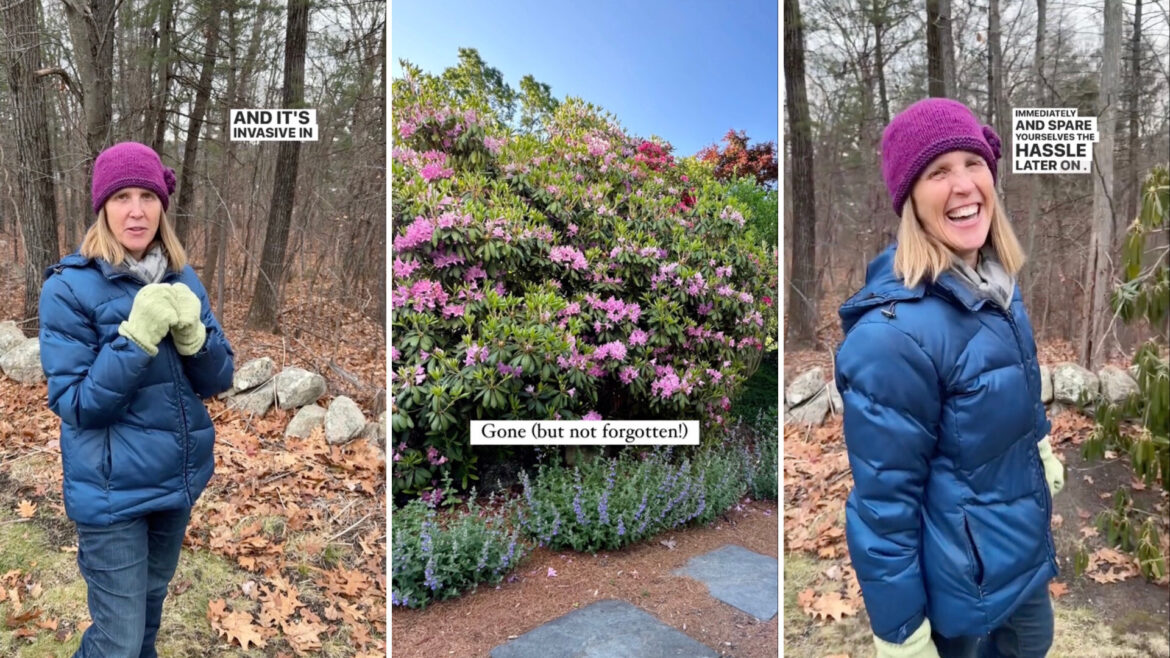Save yourself the headache and check your local invasive species list before transplanting any pretty flowers to your garden. One Massachusetts gardener unknowingly invited a super-spreader invasive that is notoriously hard to remove into their yard.
“You mention that you have lily of the valley here that you brought from your mom’s, and I love the idea, it smells great, but it’s kind of a nightmare,” Jess explained in a video on her You Can Do It Gardening (@youcandoitgardening) TikTok page. In the video, the self-described garden coach is standing near a client’s garden patch beside a short rock wall next to a forest.
@youcandoitgardening Hi, it’s me—droning on about invasives and out of control plants again!😂 Every area is different and invasive or highly aggressive plants in one place are not necessarily invasive in others (there is a technical distinction between these two, depending on where you live). In addition to lily of the valley, I’ve seen English ivy😑, certain types of vinca and lamium (not all types are classified as invasive, and even those which may be are not necessarily in all regions). The mega point here is: know what’s in your garden and how easily it could spread to surrounding areas, including neighbors. What have you seen taking over near you? (Please state your location to help others be aware.) A note on orange dailies, which some people refer to as “ditch” lilies: they are very aggressive, with very tough roots. It can be never hard to remove them and they tend to spread everywhere. This is from personal experience and also seeing this at many clients’ homes. If you’re new here, I’m a garden coach and consultant based in the Boston area (zone 6b). I don’t have time to answer all the questions that come in and I don’t have all the answers anyway so please help others if you have information to share! Go to my website to learn more about what I do or to schedule consultations and more: https://www.youcandoitgardening.com Locations: videos are done by clients at their homes and this was done by Lee #youcandoitgardening #invasiveplants #escapecultivation #gardencoach #gardeningtips #gardeningforbeginners #gardening #diylandscaping #landscaping #lilyofthevalley ♬ original sound – You Can Do It Gardening
“The concern here is that it won’t be contained,” Jess said. “It will probably be hard to contain here. More importantly, though, is that you’re abutting the woods, so that would easily jump over and that would be called ‘escaping cultivation.'”
Jess explained that this term refers to invasive species that have spread beyond where homeowners or gardeners are monitoring them. There, they can easily outcompete native plants for resources — like water and sunlight — and take over wetlands or conservation lands, becoming a big problem.
On the flip side, native plants are perfectly adapted to the soil, climate, and wildlife of a certain region. They are important parts of the food chain of those ecosystems, forging mutualistic relationships with insects, birds, and mammals. For example, there are some plants that attract specific pollinators in exchange for reproduction.
This means that local food webs depend on the native plants, as well. Without them, dependent insects and the birds that rely on those insects decline, creating a butterfly effect that changes the entire ecosystem, no pun intended.

Want to go solar but not sure who to trust? EnergySage has your back with free and transparent quotes from fully vetted providers that can help you save as much as $10k on installation.
To get started, just answer a few questions about your home — no phone number required. Within a day or two, EnergySage will email you the best local options for your needs, and their expert advisers can help you compare quotes and pick a winner.
Invasives are easy to avoid, though notoriously difficult to get rid of once they’ve started to run wild. So save yourself the extra time, labor, and money by upgrading to a natural lawn, or by incorporating practical rewilding steps into your landscaping plan.
“The mega point here is: know what’s in your garden and how easily it could spread to surrounding areas, including neighbors,” said Jess.
“This talk is important,” one viewer commented.
“I have it all over my garden beds and it’s completely taking over. I can’t handle it anymore & I want the toxic plant gone,” wrote one frustrated gardener.
TCD Picks » Upway Spotlight
💡Upway makes it easy to find discounts of up to 60% on premium e-bike brands
Join our free newsletter for easy tips to save more and waste less, and don’t miss this cool list of easy ways to help yourself while helping the planet.


Comments are closed.